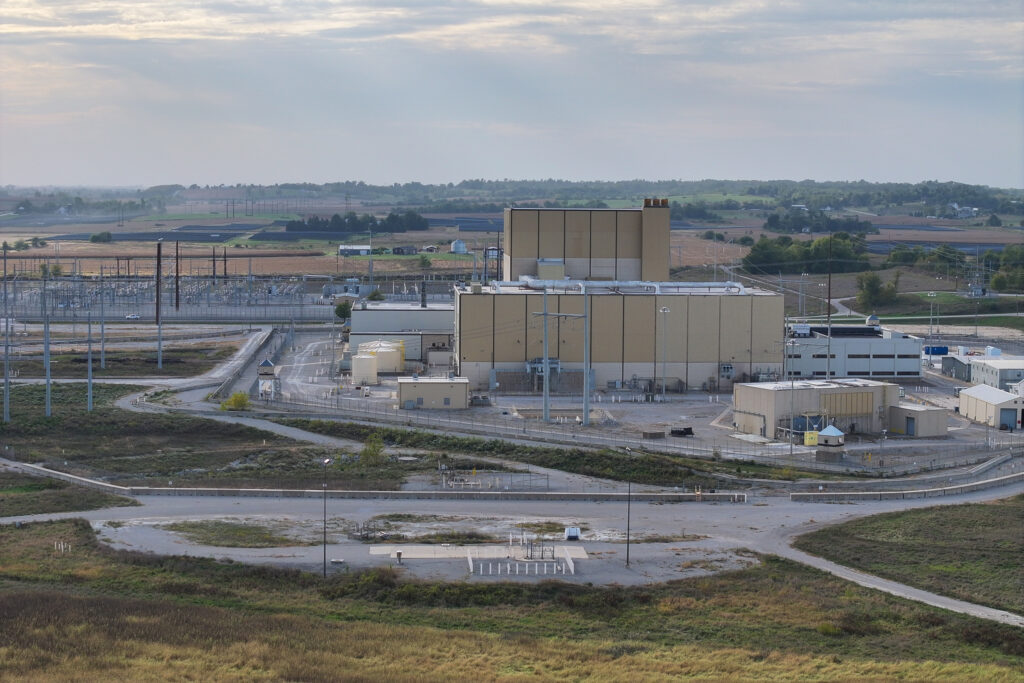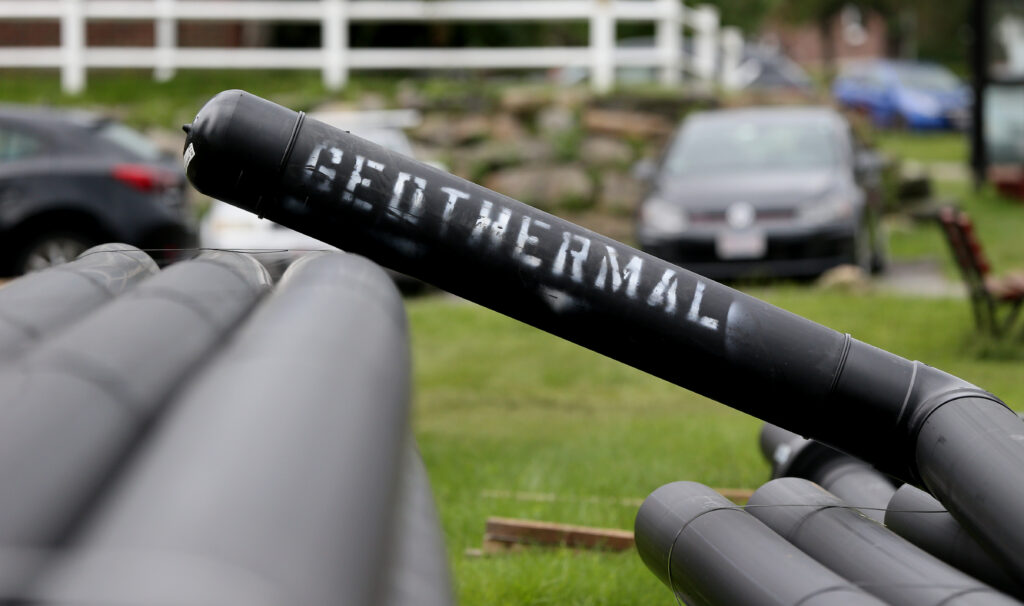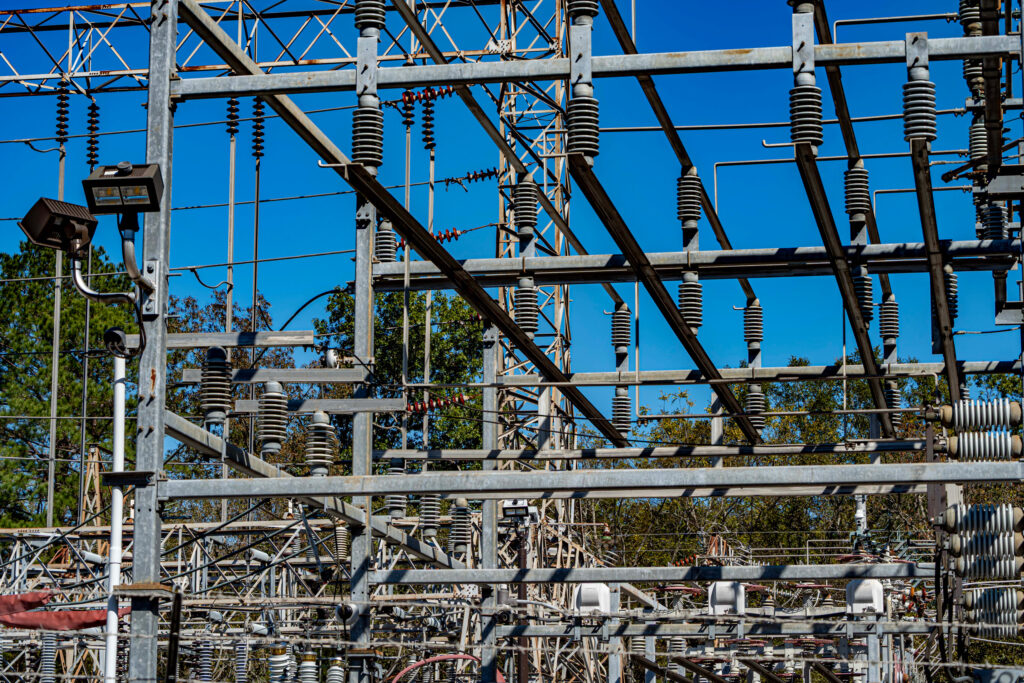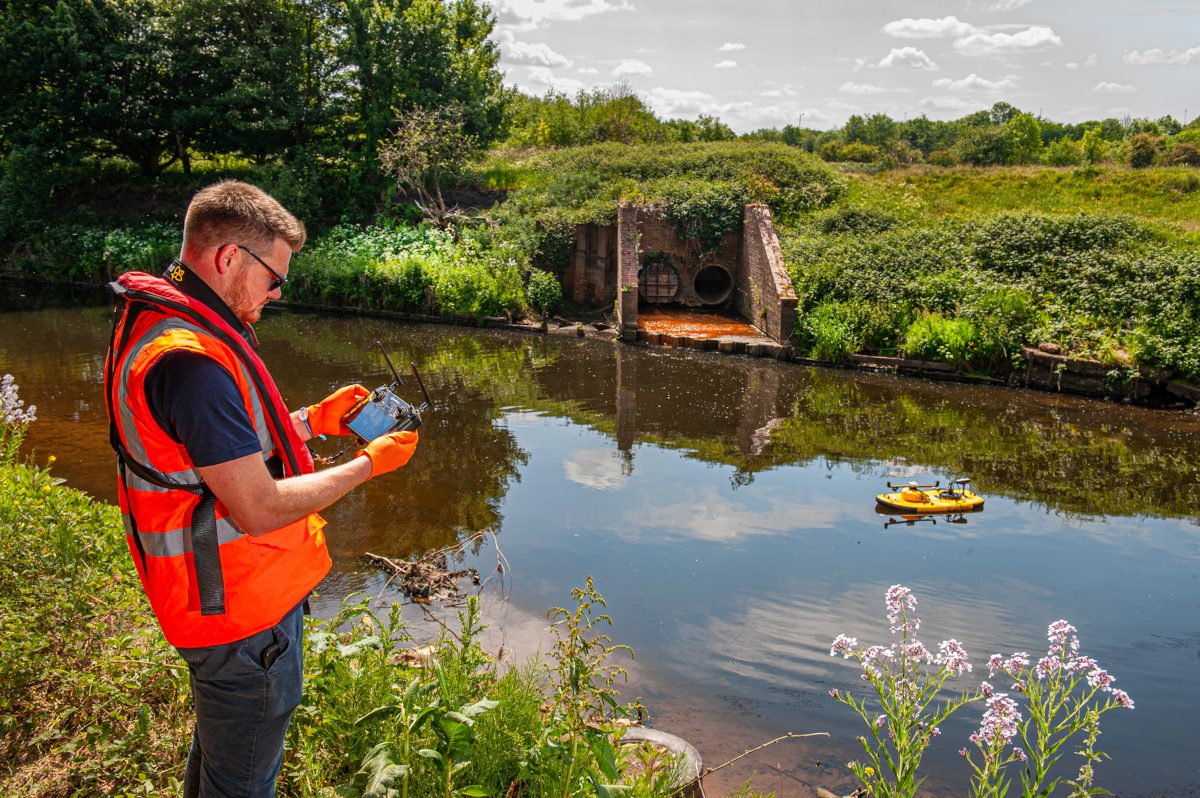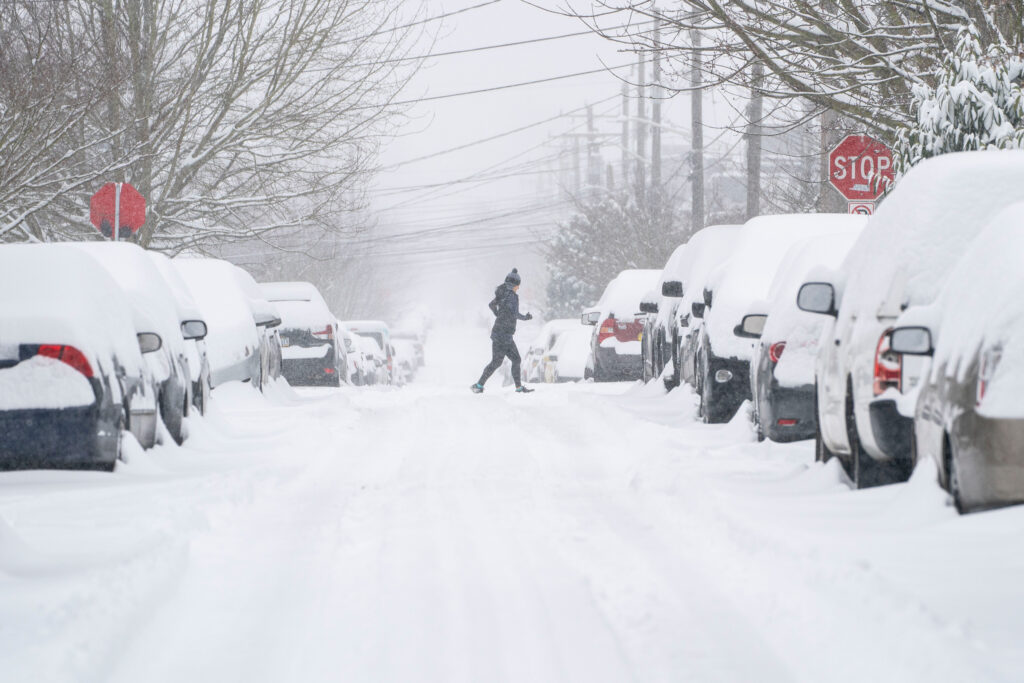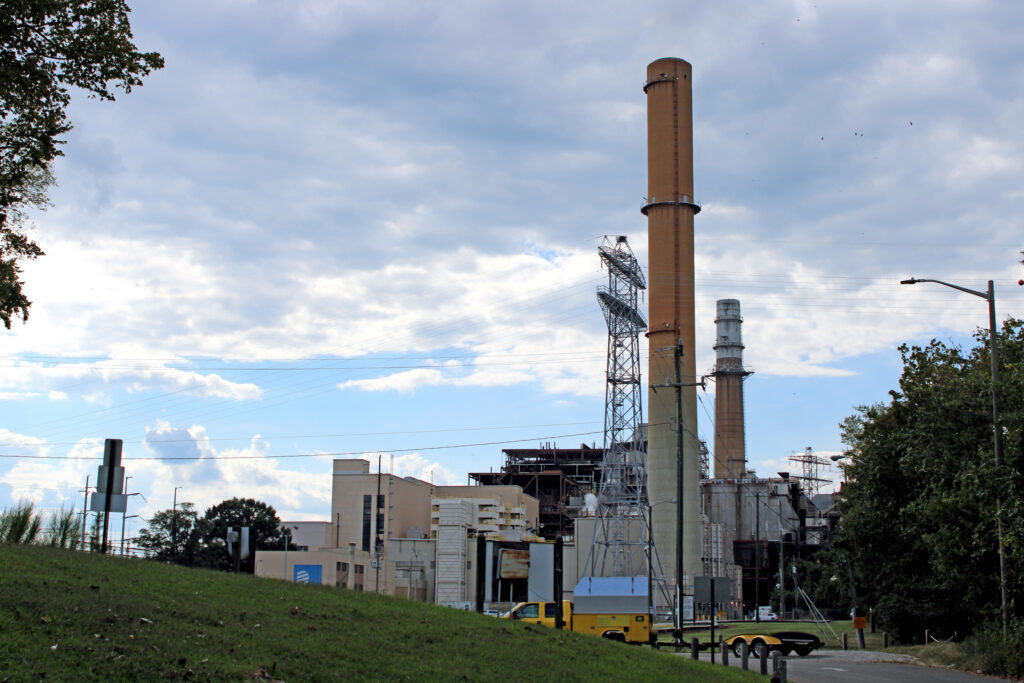SWARTHMORE, Pa.—In the basement of Swarthmore College’s dining hall, a transformation is underway. As students eat lunch upstairs, beneath their feet, the school’s fossil fuel past is being replaced with its clean energy future.
Off a cavernous, buzzing space that will eventually house the plant at the heart of a new geoexchange system for heating and cooling the college, dusty old pipes, first installed more than a century ago as part of a natural gas-powered steam system, sit alongside shiny replacement pipes, which will soon carry hot and chilled water across campus.
The geoexchange system works by storing heat in the earth during the summer and extracting it in the winter. In phase one of the 12-year project, 350 800-foot deep, 6-inch wide wells, drilled into one of the school’s expansive lawns over the last year, will store the heat. Swarthmore’s system will be powered by off-site renewable energy, and they expect to begin connecting buildings later this year.
We’re hiring!
Please take a look at the new openings in our newsroom.
See jobs
Standing in the doorway, Andy Feick, the associate vice president for sustainable facilities operation and capital planning, gestured down a long, fluorescent-lit tunnel. On this side, several sets of pipes crowded the opening from floor to ceiling, leaving a narrow gap between. “You have to be pretty skinny to fit in there now,” he said, as a worker waved from the other side.
In a way, the old pipes helped to make the new ones possible. When Feick spoke to Swarthmore’s Board of Managers about replacing the old system with geoexchange, he explained that when the steam system was built in 1911, it was also an expensive technological upgrade. “Now, we’re a century later, and it’s time to think about positioning the institution for the next century of energy rather than looking toward last century’s energy systems,” Feick said.
Swarthmore is one of several colleges and universities in the United States that have already built or are in the process of building geoexchange systems on their campuses in order to lower their greenhouse gas emissions. The list includes Smith College, Carleton College, Ball State University and Princeton University, which is constructing one of the largest systems, about 60 miles from Swarthmore, on its New Jersey campus.
In a 2021 report on the U.S. geothermal power production and district heating market, the National Renewable Energy Laboratory wrote that higher education is “leading the charge” in constructing these kinds of systems here.
The trend is one consequence of the American College and University Presidents’ Climate Commitment, requiring schools to develop a climate action plan and set a target date for carbon neutrality. Swarthmore signed the agreement in 2010 and in 2012 chose 2035 as their timeline for achieving that goal.
On suburban campuses like Swarthmore’s, geoexchange systems offer an ideal pathway to reaching those ambitious energy goals. In 2022, the steam plant accounted for 36 percent of the college’s total emissions, making it the largest category in the school’s greenhouse gas inventory and an essential hurdle to be cleared on the way to reducing the campus carbon footprint. “All of those direct fossil fuel emissions associated with heating and cooling will go away as a result of this project,” said Elizabeth Drake, the director of sustainability at Swarthmore.
Swarthmore’s 425 acres of bucolic campus makes replacing more compact steam piping with bigger geoexchange pipes much more feasible than in an urban setting, said Bill Braham, professor of architecture and director of the Center for Environmental Building + Design at the University of Pennsylvania.
“I don’t know if you’ve ever looked at a hole when they dig things up in the streets of Philadelphia. In modern cities, there’s just no room down there. It’s just not possible,” he said. For Swarthmore, which has the space, “there isn’t a better option” for decarbonizing than a district heating geoexchange system like the one they’re building.
The climate in Pennsylvania is ideal for geoexchange, Braham said, because the changing seasons mean the system works on a yearly cycle, the ground cooling as heat is pumped out to heat the campus in the winter, and then reversing that process in the summer, pulling heat out of buildings to air condition them, pushing that heat into the earth and warming the ground up again.



Swarthmore also has the financial resources to afford a complex, long-term infrastructure project. In 2022, Swarthmore ranked seventh on the National Association of College and University Business Officers’ list of the highest endowment values per full-time student, at $1.6 million. In 2021, the Board of Managers approved $69 million for the school’s Energy Master Plan, which includes the geoexchange system construction.
“These are all good business decisions for them. They don’t lose money doing this, but it does take an upfront investment,” Braham said. “It will pay them back over time, and it also makes their campus resilient.”
Moving to geoexchange will decrease Swarthmore’s carbon emissions even if it wasn’t powered by renewable energy “because the new system is just a lot more efficient than our steam system,” Drake said. “There’s estimates that up to a third of the energy that goes into the steam system is lost.”
In taking on this kind of pioneering project, Swarthmore is serving as a model for others to follow in the future. “What we do here matters, but we’re also a very small campus,” Drake said. “But we can model solutions and share lessons learned with other folks.”
Feick said that Swarthmore has given tours of the campus to guests from other schools, companies and organizations interested in learning about the system and how it’s being built.
To get a better view of the lawn where the first wells were drilled, we climbed the stairs of a dorm building at the site’s edge, stopping at a window that overlooks the field. Parrish Hall, the 19th-century building at the center of campus, could be seen in the distance.
Ringed by fencing, dorms and trees, the well field was mostly empty except for a few scattered pieces of equipment. Even in late winter, Swarthmore’s grassy campus is green, and the dry, packed dirt of the well field appeared like a large bald spot.
“This is after everything is done, but at the height of it, there were five drill rigs out here, all going at the same time,” Feick said. “And it’s mud. I mean, a drill site is just mud for eight months.” For this reason, water control was an important issue to account for during construction.
Noise was another. “As you can see from being here, these residence halls are very close to this well field,” Drake said, pointing to the dorms. “We were concerned about sound and the acoustic impact of the drilling.” A Swarthmore faculty member in the engineering department whose expertise is in acoustics helped the college to design and implement temporary sound barriers to muffle the noises of the drilling.
“I think because it took so long and there was so much background noise, people got used to it,” Feick said. “And then I was amazed when the last drilling rig left. I thought, my gosh, it’s so quiet.”
There were some complaints about the disruption drilling caused. But Feick and Drake both felt that outreach efforts to explain the purpose behind the construction to the community had gone a long way toward making Swarthmore’s 1,600 students more tolerant of the upheaval.
“A construction site of this size has required students to walk a very circuitous route in order to get to things as well as the other obstructions we have from laying the piping infrastructure,” Feick said. “But they don’t complain about this one very much because our students are of a generation where they say that this is absolutely necessary. And yes, it’s inconvenient, but it has to happen.”
For Drake, the chance to experience what she called a major turning point in the history of the college outweighed the disruptions caused by the construction. “One hundred and fifty years of burning fossil fuels–and now we’re going to stop,” she said.
We looked at the bare swath of field awaiting grading and grass seed. “We’ll have this fence up probably until August or September to allow the lawn to get strong so people can walk on it,” Feick said. “And then we’ll take the fence down and it’ll be returned” to its original state.
Outside, we stopped to examine the gleaming, modern exterior of the dining center, which opened in 2022. The building has an all-electric kitchen and is made of glass, stone and mass timber. Robins skittered around campus trees, and patches of snow were still visible on the ground.
At the same time initial planning for the geoexchange system was happening, the college was also in the process of designing the new dining hall, Drake said, creating a “nice synergy” between the two projects, and making the new building the perfect space to house the central plant.
This story is funded by readers like you.
Our nonprofit newsroom provides award-winning climate coverage free of charge and advertising. We rely on donations from readers like you to keep going. Please donate now to support our work.
Donate Now
The geoexchange project also changed how the college approached the building design itself. “The energy project elevated us to a whole other level with how we think about design and construction and meeting new standards,” Feick said, noting that the dining hall has already exceeded their goals for efficiency.
The dining center’s orientation and the shape of its roof, covered in more than 800 solar panels, were designed to “maximize solar gain,” and the panels will meet about 40 percent of the building’s energy needs. Down to details like a policy eliminating the use of trays for diners in order to save water, the building was meant to “make a strong statement about sustainability,” Feick said.
“So ironic that you get the smokestack in the back,” said Cara Anderson, who works in the communications department at Swarthmore, as we took in the scene. Behind the sloping roofline of the dining hall, as sunlight glinted off the solar panels, the old steam plant’s tower loomed. Wisps of smoke drifted upward from its mouth.
“We’re going to repurpose the [steam plant] building. It’ll be an adaptive reuse, but we’ll take down the smokestack,” Feick said, sounding excited. “I can’t wait for that day. It will be the most visible sign of progress.”






